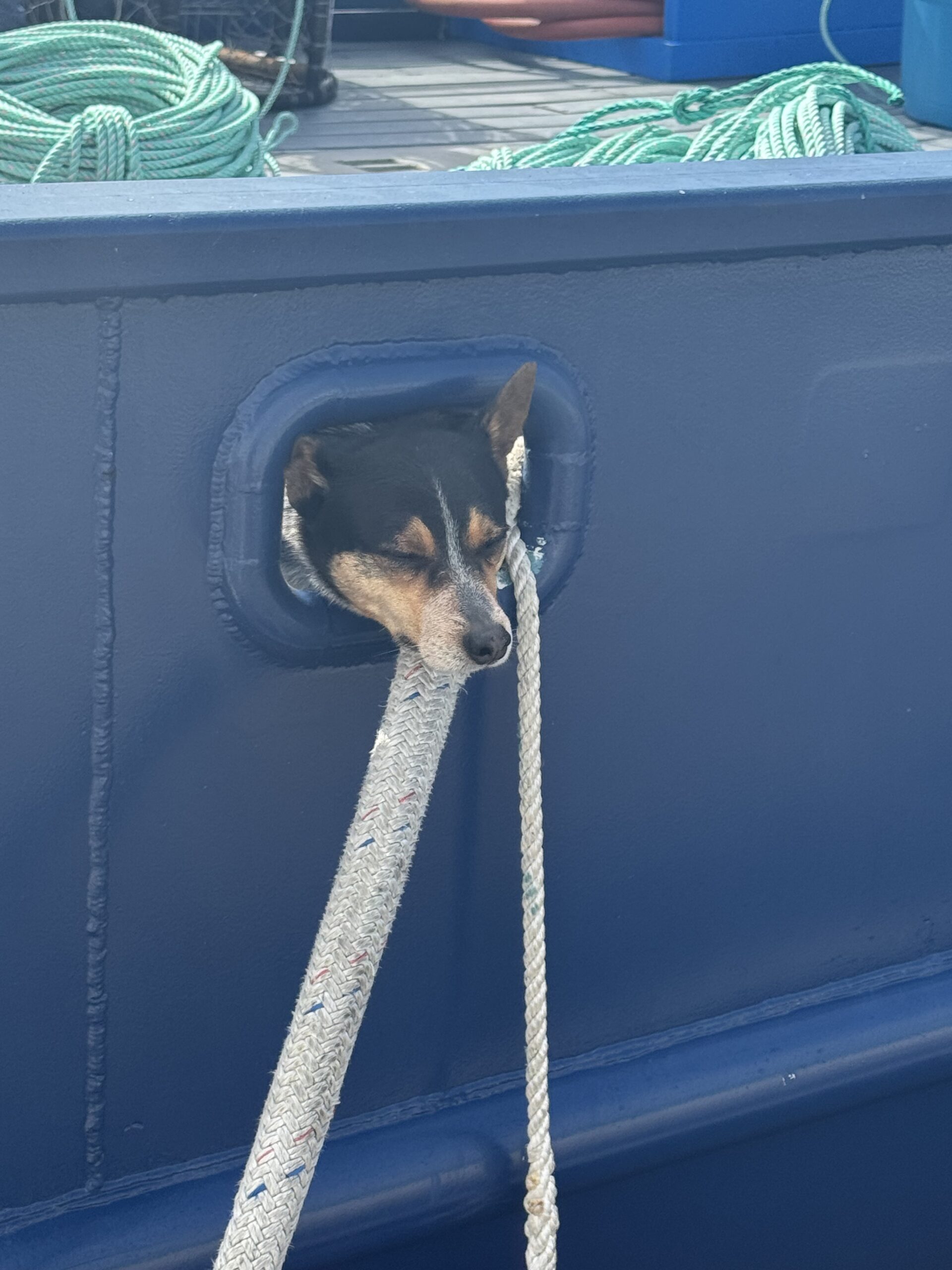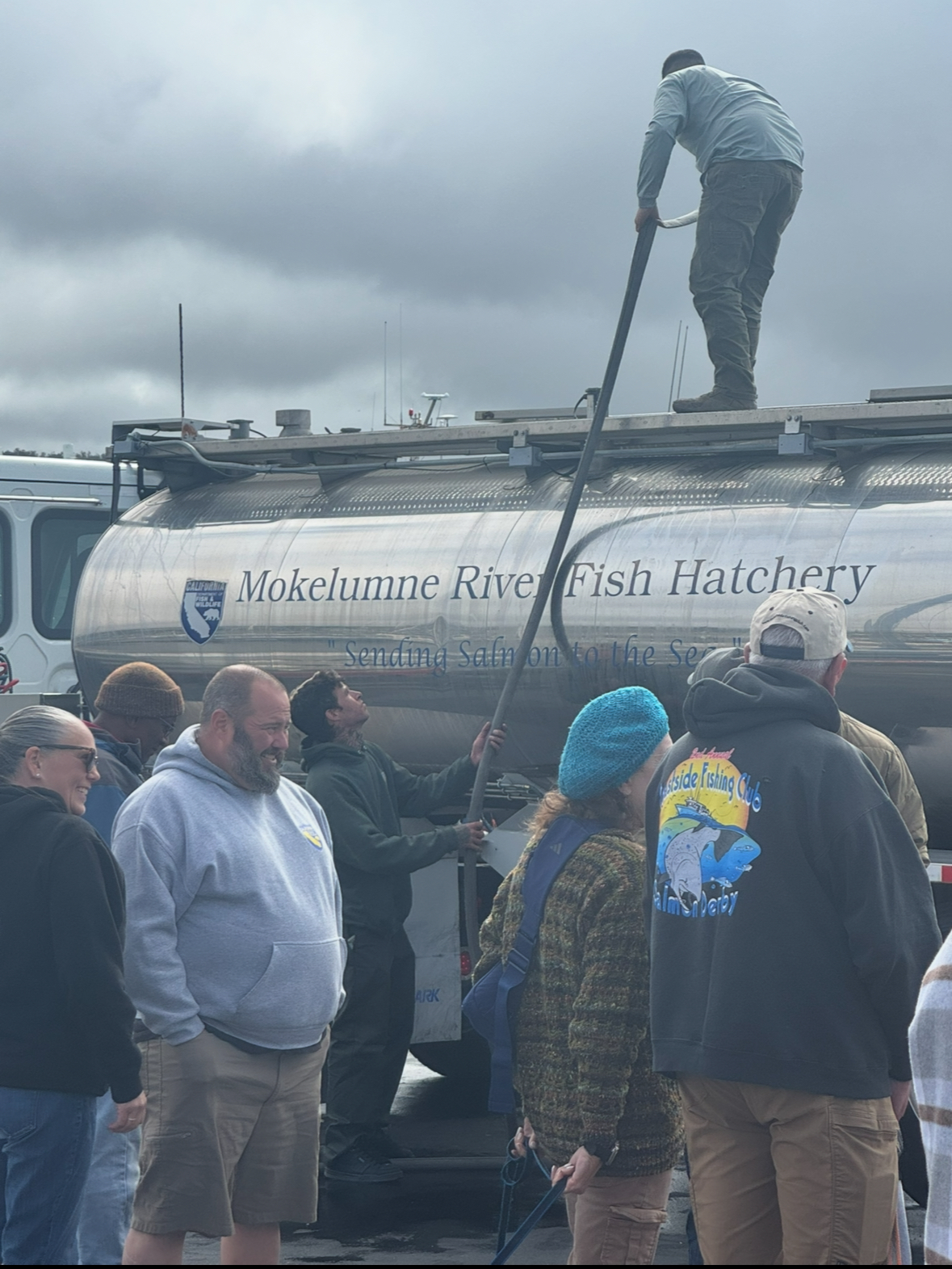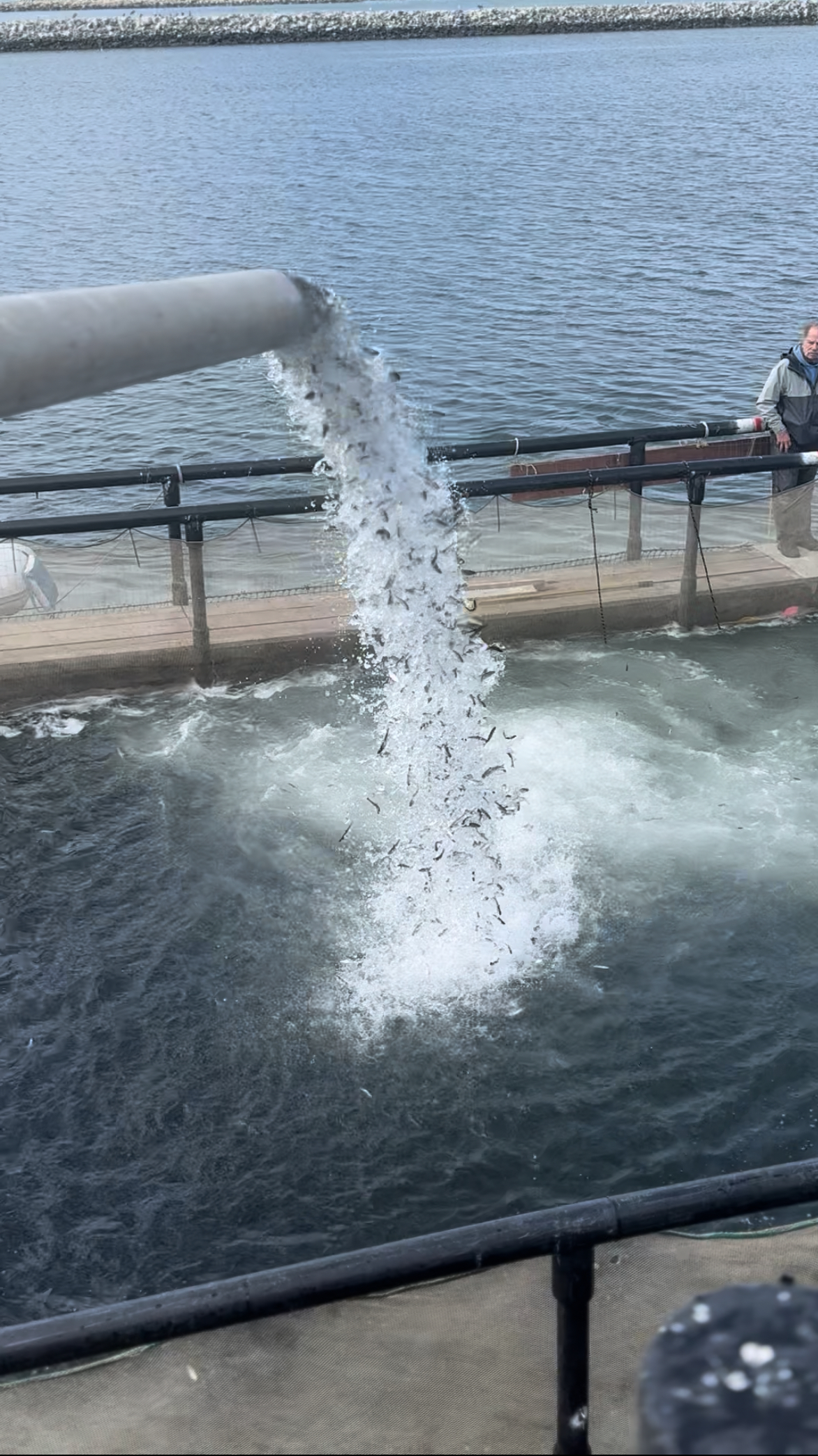
By Larry Hall | SV Francesca
Sailing up and down the California coast offers more than just scenic anchorages and steady wind—it brings me face-to-face with the people who live and work on the ocean. Last week, I spent time talking with crabbers at Half Moon Bay and visiting a local fish hatchery inland. I came away with a deeper understanding of where our seafood comes from—and how the future of fishing can be both responsible and resilient.
⸻
🦀 The New Generation of Crab Traps: Ropeless, Smart, and Whale-Safe

I had the chance to chat with the crew of Jacqueline L—a working crab boat in Half Moon Bay. What stood out? Their use of ropeless crab pots, which eliminate the vertical buoy lines that often entangle migrating whales.
Instead of traditional buoys, these new traps are:
• Geolocated and remotely triggered via acoustic signals or timed releases
• Designed to minimize ghost gear if traps are lost
• Whale-safe and already showing strong catch rates
It’s not just about conservation—it’s about fishermen staying ahead of changing regulations and preserving both their livelihoods and the ocean ecosystems they depend on.
⸻
🐟 Not a Fish Farm, a Fish Future: The Mokelumne River Hatchery

While dockside in Half Moon Bay, I’ve been thinking a lot about where our seafood comes from. But a few days later, I had the chance to see something different—the Mokelumne River Fish Hatchery up in California’s Central Valley. It’s not a fish farm in the usual sense. It’s a quiet powerhouse behind the scenes of California’s salmon recovery efforts.
The hatchery works to:
• Rebuild Chinook salmon and steelhead populations devastated by dams, water diversions, and habitat loss
• Collect and fertilize eggs from returning fish, raising them in carefully monitored tanks
• Release millions of juvenile fish back into the river system each year to complete the life cycle
This isn’t aquaculture for consumption—it’s a public restoration effort, preserving a species that once ran thick in the rivers and now needs human help to survive.

I learned that:
• The hatchery coordinates closely with biologists to monitor genetic diversity and river health
• They time water flows and fish releases to match natural migration cycles
• Most importantly, they’re helping keep wild salmon viable, not just a nostalgic memory
⸻
🌊 Sustainable Fishing Isn’t Just a Concept—It’s People, Practice, and Progress
What struck me most from these experiences wasn’t just the gear or the data—it was the attitude. These fishermen and conservationists care deeply about the sea. They’re not romanticizing the past. They’re innovating, adapting, and staying connected to the water in practical, grounded ways.
As a sailor and steward of the oceans, I came away hopeful. Sustainability isn’t an all-or-nothing battle—it’s made up of small decisions, better tools, and partnerships between those who work the sea and those who protect it.
⸻
⚓ Next Steps, and What You Can Do
• Ask where your seafood comes from—and support producers using responsible methods.
• Spread the word about whale-safe crab gear if you’re near coastal communities.
• Stay curious. Talk to fishermen. Visit hatcheries and docks. Real sustainability happens at water level, not just in headlines.
I’ll be sharing more as I sail along—because the stories of our oceans deserve to be told from the deck, not just the desk.